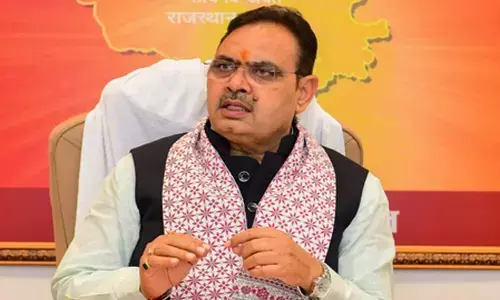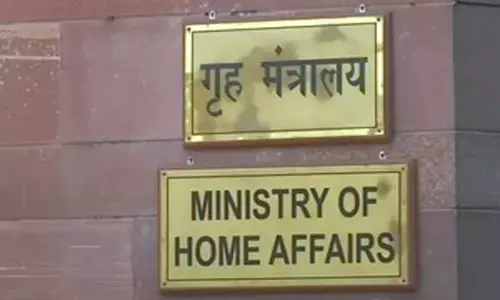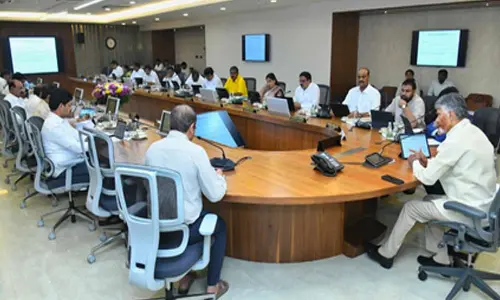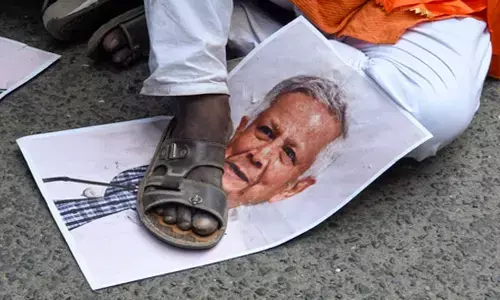Far from all-in on the Indo-Pacific

There are many who would like to see the IndoPacific concept evolve from an idea to a reality These supporters are looking to India and Indonesia to lead the way But this is unlikely, owing to a misalignment between the two countries political and economic goals
There are many who would like to see the ‘Indo-Pacific’ concept evolve from an idea to a reality. These supporters are looking to India and Indonesia to lead the way. But this is unlikely, owing to a misalignment between the two countries’ political and economic goals.
Promoters of the ‘Indo-Pacific’ claim that growing economic and security links are contributing to the integration of the Indian and Pacific Ocean regions. These proponents, including Japanese Prime Minister Shinzo Abe, see India and Indonesia as the crucial drivers of this Indo-Pacific strategic system.
But a closer look at India’s links to the Pacific region and Indonesia’s links to the Indian Ocean region reveal that their contributions to Indo-Pacific integration remain limited.
India’s integration with the Pacific region was to be driven by the ‘Look East’ policy launched in 1991 by the Congress Party-led government of PV Narasimha Rao. This policy has now been renamed ‘Act East’ under the current Bharatiya Janata Party-led government of Narendra Modi.
The Act East policy includes regional and sub-regional initiatives for trade, economic cooperation and connectivity. Free trade agreements have been signed or are being negotiated between India and the Association of Southeast Asian Nations (ASEAN), Malaysia, Thailand and Australia. India is also involved in negotiations for the Regional Comprehensive Economic Partnership (RCEP).
But the outcomes of these initiatives have been modest. For instance, after the signing of the free trade agreement between India and ASEAN, trade between the two initially rose steadily with an annual growth rate of 22 per cent, until 2011–12 after which it began to decline.
Entrenched structural problems at home, weak global demand and growing protectionist sentiment among potential trading partners make the prospect of India signing new free trade agreements unlikely. Negotiations for a free trade agreement with Australia have stalled on issues of agriculture and services. While India rejects Australia’s demand to liberalise Indian agricultural markets, Australia has resisted India’s desire for greater labour mobility for its skilled workers. India’s positions on agriculture and services have also hampered RCEP negotiations.
India’s infrastructure-building to improve connectivity between its northeast region and Southeast Asia is slowly proceeding. Yet its sub-regional projects have long been hampered by secessionist movements in its north-eastern states, a lack of immediate economic benefits, and concerns about Chinese expansionism and economic dominance.
Indonesia’s integration with the Indian Ocean region stretches back to the establishment of the Indian Ocean Rim Association (IORA) in 1997, and has been enhanced by its engagement with the Indo-Pacific concept since 2013.
The current government of Joko Widodo envisions Indonesia as a maritime fulcrum: the ‘point of support where the burden of the two oceans actually rest’.
Interest in Middle Eastern energy, and India’s potential as both an investor and a market for Indonesian goods, are driving Indonesia’s Indian Ocean outreach. During Indonesia’s 2016–18 leadership of IORA, the group held its first leaders’ summit and produced a concord calling for greater intra-regional trade and investment.
But despite renewed efforts, Indonesia’s engagement with Indian Ocean economies remains limited. A recent attempt to encourage greater investment from Saudi Arabia paid few dividends, with Indonesia achieving a relatively paltry pledge of US$6.7 billion.
Likewise, over-optimism has burdened Indonesia’s courting of India, with trade actually declining in recent years. Protectionist sentiments continue to hamper a deepening of India–Indonesia trade. In one telling example, India’s aggressive use of import duties drove Indonesia to turn to China as a market for its crude palm oil exports.
Both countries’ unattractive investment climate and protectionist trade policies are contributing to the failure of bilateral efforts to boost integration, while limited complementarities and a lack of political will prevent greater intra-IORA trade. Indonesia’s Asia Pacific economic partners — Singapore, Malaysia and Australia — continue to make up the bulk of Indonesia’s trade with IORA members.
Under Widodo, Indonesia’s international outlook is strongly shaped by the need for foreign investment. A significant increase in foreign investment is deemed crucial to funding Widodo’s ambitious infrastructure plans — the centrepiece of his Global Maritime Fulcrum (GMF) vision. This focus on domestic infrastructure development has only deepened as his presidency has matured and has translated into an almost singular focus on attracting foreign investment, for which China and Japan have been the most willing sources.
For Widodo, the Indian Ocean region and the broader Indo-Pacific are only of value to the extent that they serve his developmentalist economic agenda. Indeed, as the Indian Ocean region has failed to support Widodo’s infrastructure plans, the GMF has shifted from being a vision with an emphasis on Indonesia’s place at the intersection of the Indian and Pacific Oceans — an Indo-Pacific strategy — to focussing on Indonesia’s development as a ‘sovereign, developed, and strong maritime state’.
Indo-Pacific is a term that is increasingly used by policymakers and analysts under the assumption that economic links between Asia’s two oceanic regions will continue to deepen as the economies of countries like India and Indonesia grow and expand. But the evidence suggests that structural weaknesses in the political economies of India and Indonesia will place limits on the roles that they can play in regional integration. While these entrenched problems persist, the emergence of India and Indonesia as major drivers of an integrated Indo-Pacific strategic system will remain wishful thinking.
(Couresy: eastasiaforum.org; Priya Chacko is a senior lecturer in international politics at the Department of Politics and International Studies, University of Adelaide. David Willis is a PhD candidate in international relations at the College of Business, Government and Law, Flinders University, Adelaide)
Woman injured in stabbing attack in Tokyo, suspect at large
Bengal cop booked for murder over mysterious death of woman home guard, SIT to probe case
Staffer recalls horror of 7-kg gold robbery by armed gang in Karnataka’s Hunsur
25-Year-Old Airline Cabin Crew Member Dies At Gurugram Party; Police Begin Investigation















